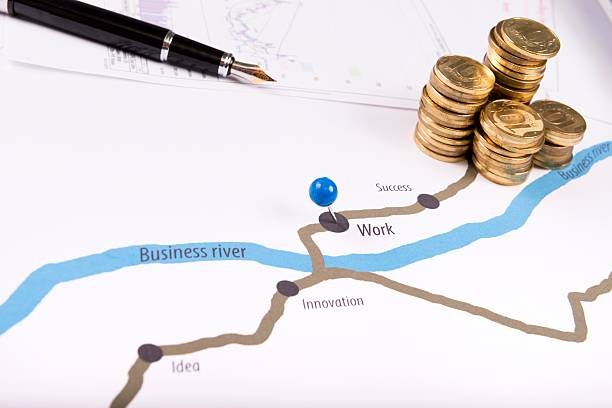Financial planning is often seen as overwhelming, especially for women who are juggling multiple roles and responsibilities. Many experience money anxiety that prevents them from making consistent progress toward financial security. As my research into financial wellness frameworks evolved, resources like Dow Janes Reviews helped inform this roadmap’s design, emphasizing clarity, compassion, and step-by-step progress. This article introduces a structured yet gentle framework to reduce stress and empower women+ to take consistent action. Each step blends mindset with practical tools, showing that financial planning can be a source of confidence rather than fear.
Why Stress Derails Financial Planning
Stress is one of the most common barriers to effective money management. When people feel anxious about their finances, they often delay decisions, avoid checking accounts, or make reactive choices that undermine long-term goals. Research consistently shows that stress impairs decision-making by narrowing attention and increasing impulsivity. According to the American Psychological Association’s report on financial stress, money remains the top source of stress for most adults in the United States. For women+, financial stress may be compounded by structural challenges such as the gender pay gap and caregiving responsibilities. Recognizing how stress affects behavior is the first step in building a system that minimizes pressure and creates room for clarity. By designing a roadmap that lowers cognitive load, women+ can focus on sustainable growth rather than short-term crisis management.
Define Your Financial Values and Vision
A stress-free roadmap begins with understanding your values. Money is not just about numbers but what those numbers enable in your life. Ask yourself: What does financial ease look like to me? Can I travel, provide security for my family, or reduce daily worries? Values-based planning gives direction to financial choices. For example, someone who values freedom may prioritize building an emergency fund, while another who values legacy might focus on retirement contributions. Starting here makes every subsequent financial action feel more intentional and less stressful.
Set Attainable, Behavior-Based Milestones
Once values are clear, the next step is to set practical milestones. Instead of vague goals like “save more,” break objectives into measurable behaviors. For example, “automatically transfer $50 into savings every Friday” is specific, achievable, and repeatable. Behavioral science shows that small, consistent actions compound over time. Guidance from the CFP Board on effective financial planning milestones emphasizes that realistic, step-by-step goals are more likely to succeed than overly ambitious targets. Framing milestones as behaviors—rather than outcomes—removes pressure and makes progress visible sooner.
Build a Gentle, Habit-Friendly Budgeting Structure
Budgeting is often viewed as restrictive, but reframing it as a supportive structure helps reduce resistance. Start by identifying essential categories: needs, savings, and wants. Then, introduce a “joyful spending” category to ensure balance. Habit-friendly budgeting also means creating systems that don’t require constant willpower. For instance, using an app with visual progress trackers or scheduling a short, weekly check-in makes budgeting less of a burden. Consistency feels more natural when budgeting is aligned with existing habits, such as reviewing accounts over morning coffee.
Automate Savings and Investments with Ease
Automation is one of the most potent tools for stress-free financial planning. Setting up recurring transfers into savings or investment accounts ensures progress without the need for constant decision-making, reducing stress and increasing consistency. A Federal Reserve report found that fewer than half of households have enough cash savings to cover three months of expenses, underscoring the importance of systematic saving. Automating contributions to an IRA or employer retirement account removes the pressure of remembering and helps build wealth steadily over time. Even small amounts, when automated, accumulate significantly.
Monitor, Adjust, and Practice Self-Compassion
Financial planning is not static—it evolves with life’s changes. Reviewing your roadmap monthly allows you to track progress, adjust as needed, and prevent setbacks from compounding. However, the mindset behind these reviews is equally essential: approach them with curiosity, not criticism. Self-compassion is a powerful antidote to financial stress. Instead of seeing mistakes as failures, treat them as feedback. A missed savings contribution or unexpected expense is an opportunity to learn and adapt. This perspective keeps momentum while preventing the burnout often accompanying rigid financial planning.
Real-World Example: “Maria’s Roadmap to Ease and Wealth”
Maria, a 34-year-old professional, once felt paralyzed by financial stress. By defining her security value, she set the vision of creating a reliable emergency fund. She then broke her goals into behavior-based milestones: transferring $75 weekly into a separate account and scheduling automatic payments for student loans. Within six months, Maria built a budgeting habit that included necessities and joyful spending. She automated contributions to a retirement account and adjusted her plan when she faced an unexpected medical expense—without guilt. Over time, Maria’s stress transformed into confidence, proving that a compassionate, structured approach works.
Conclusion
Designing a stress-free financial roadmap for women+ involves much more than crunching numbers. It requires a balance of mindset, structure, and compassion grounded in clear values and step-by-step actions. By reducing stress triggers, embracing automation, and practicing self-kindness, women+ can create a financial plan that grows wealth and nurtures peace of mind.





Leave a Reply